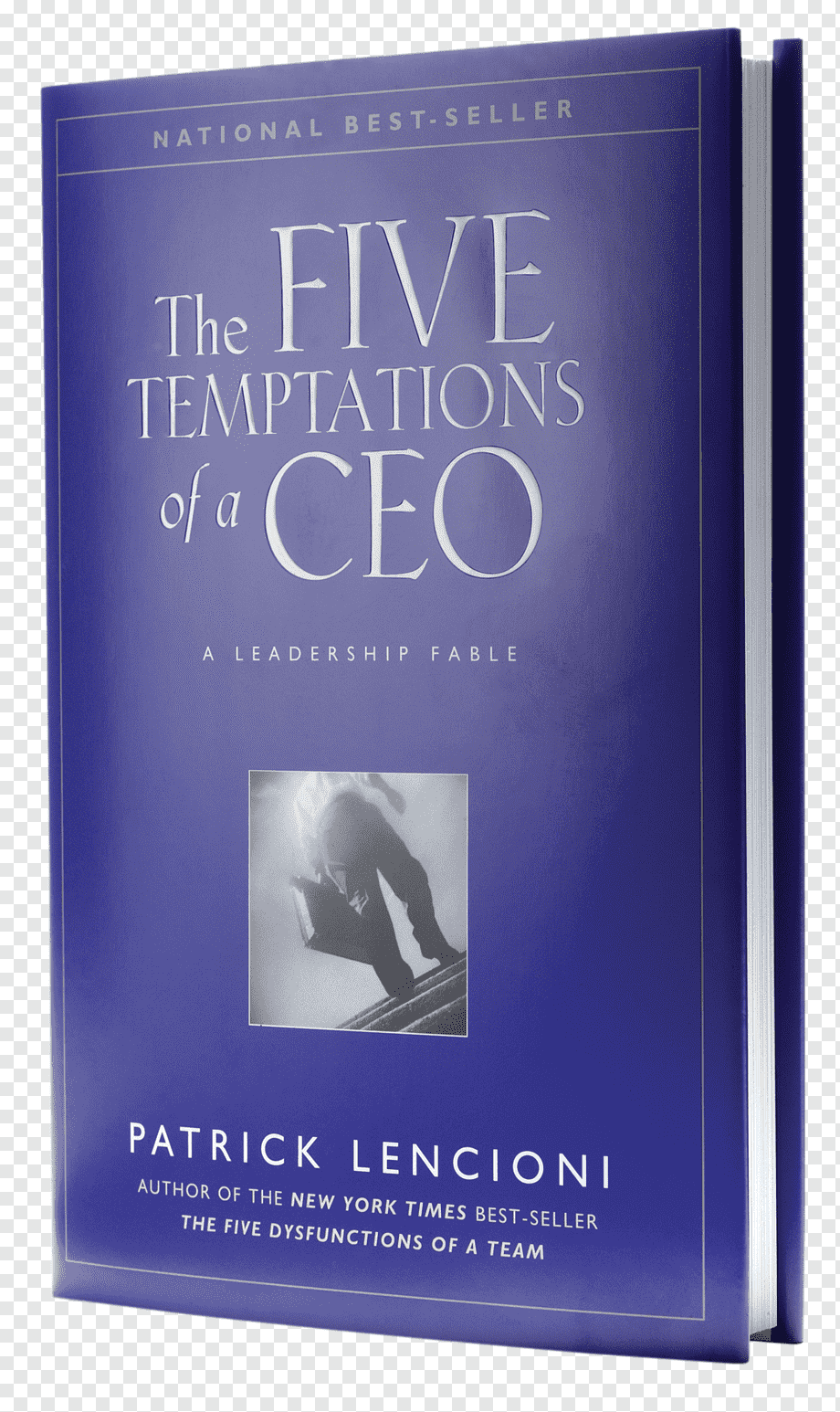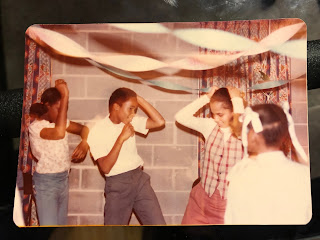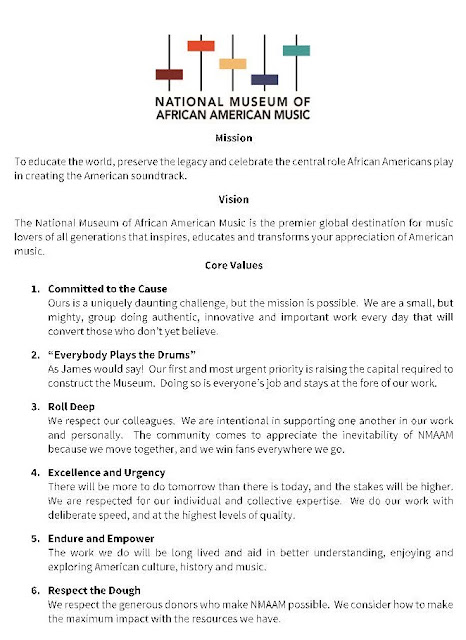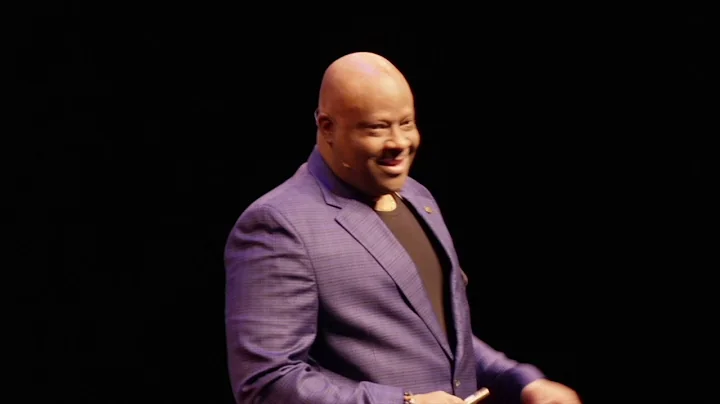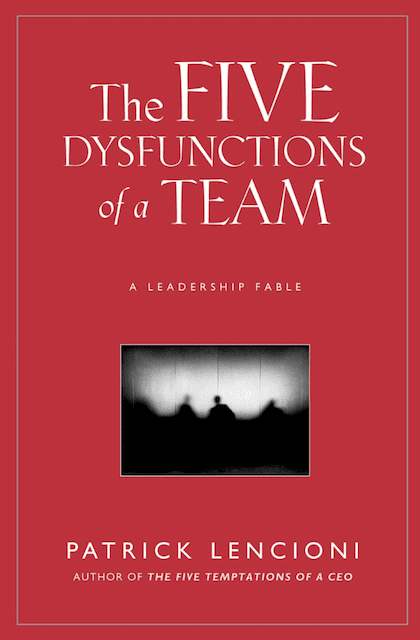Objectives
Over the last year, as I’ve walked through the process of improving culture and building teamwork, setting clear expectations and holding my colleagues accountable for results have risen to the top of the list of areas where I need to improve and as critical to the success of our mission. My colleague, LoLita Toney, our director of development, had also repeatedly asked for an updated strategic plan to guide our work (we’d achieved the milestones set forth in our previous plan).
This brought to mind a concept that my friend Anthony Barber, a PepsiCo and former Procter & Gamble exec, had introduced me to several years back – OGSM’s. Objectives, Goals Strategies and Measures, developed in Japan and brought to America in the 1950’s, was popularized as an organizational tool by P&G and would address each of the needs that my team and I had. The objectives, goals and strategies set out clear expectations and the measures provide a standard means of accountability. Additionally, because the company OGSM’s cascade down through the departments, tying company strategies and measures to departmental objectives and goals, it creates a strategic plan for the organization as well.
I’d attempted to use OGSM’s previously in other leadership assignments. While I’d found them to be good in theory, I also found them to be too dense (or detailed) to be practical. These OGSM’s required a lot of thinking, writing and revising. Just drafting the OGSM’s required commitment. They also require, buy-in, participation, communication, discipline and focus for them to be effective.
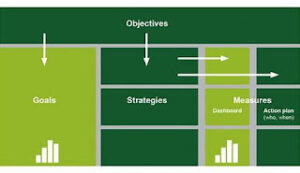
But that’s the point isn’t it? If I want results then discipline, focus and thoughtfulness shouldn’t be too much to ask.
To get started, I gathered several articles on OGSM’s to refresh myself on how they worked. Then I shoved my management team into a conference room for a few hours to take a stab at it. Intended as an exercise to demonstrate the mutual dependence that we have in doing our work and achieving results, for the first hour or so, the sailing was smooth. Interest was sincere and participation was full; and within that time we had a rough draft of
company OGSM’s.
As we ended hour two, we started to explore departmental OGSM’s. Eyes glazed over, folks were wiggling in their chairs and optimism was scarce that OGSM’s were applicable or a beneficial tool. Nevertheless, after a short break, I insisted that we continue. So after the breather and with a renewed sense of determination, I’m sure, just to get the meeting over with, the team pushed through to rough departmental OGSM’s.
For me, and for them, what we’d drafted only raised more questions. I needed to learn more about how to apply this model to our work. So the next step was for my director of marketing, Dionne Lucas, and I to head to Chicago to meet with a guru. My friend Reggie Moore is the SVP of sales and marketing for Land O’ Frost consumer products and uses this process routinely in his business.
Dionne and I spent a day in Reggie’s basement talking marketing strategy and OGSM’s. (Reggie and Dionne did most of the talking. I was focused on the snacks that Reggie’s wife, Miriam, provided.) As I listened, I came to appreciate how, if I was going to use this tool, I was going to have to invest the time and fully buy-in to the model
myself.
So, when back in Nashville, I took time over the next few weeks to compile and revise the drafts that the team put together at the retreat a few weeks earlier. This took more time and concentrated thought than ever imagined that it would. I came to understand that the Goals and Measures MUST be quantifiable. Not only does that help with accountability, but it also enables the necessary “cascading” of the company OGSM’s to the departmental ones. I also came to appreciate that all of the company strategies should become departmental strategies and, conversely, there should be no departmental objective that is not identical to a corporate strategy.
These are really the basics of OGSM’s, but until you focus on it you don’t realize how important it is to follow those rules closely. This is also what contributes to clarity of expectations and enables accountability. It is also what makes the OGSM’s a proxy for a strategic plan. In addition, this model will enable me to communicate with my board of directors and all company employees what we are focused on and enable periodic regular updates on how we are tracking.
2019 will be the year that we put this all to the test. I am betting that OGSM’s will be the tool that keeps us focused and guides our talented and dedicated entrepreneurial team towards NMAAM’s grand opening – just a year from now!
Temptation
After reading The Ideal Team Player and the Five Dysfunctions of a Team, I decided to go back and re-read the original Lencioni text, The Five Temptations of a CEO. Now much more experienced, a little more humble, but even more determined to succeed, I was now an actual CEO, so I hoped that I’d get more out of the book.
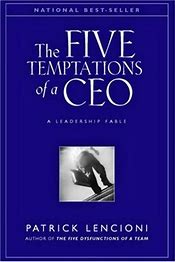
Yep!
While the other books that I’d read caused me to consider the challenges and opportunities that our business and my colleagues may have, this one caused me to scrutinize only one thing – me – the CEO.
As I read the compelling parable of Andrew, the CEO of a Bay Area IT company, and the lessons that he learned from the “ghosts of CEO’s past” on the BART train, I was challenged to contemplate the things preventing me from becoming a good, or better, CEO.
Lencioni starts from the premise that being CEO is not complicated.
That’s a tough place to start. I’d guess that most would be committed to disagreeing with that idea. The pressure to deliver results, a changing corporate environment, the diverse constituents who deserve attention… technology, human resources, marketing and strategy related issues all fly in the face of this notion.
Lencioni does acknowledge that being CEO is a formidable challenge but contends that all of these operating challenges are but symptoms of the real problem. Rather, the author insinuates, CEO’s fail because of their unwillingness to face – and address – the Five Temptations of a CEO.
1. CEO’s can be driven by ego. Instead they should be overwhelmed with the desire to achieve something and maniacal about results.
2. CEO’s want to be popular with staff or direct reports. Instead they should be clear about what is expected of employees and hold them accountable.
3. CEO’s often want to ensure they are making the right decisions. It is better to decide with the information that you have and move forward. This is easier to do if you have a vision for where you want to go. (More about that in a future post.) CEO’s are challenged by this because it opens them up to being criticized. Yet, it’s the only way to achieve clarity. If you later get better data, you can always make another decision.
4. CEO’s frequently have a desire for harmony, while encouraging constructive conflict leads to making better decisions, improved buy-in and better results.
5. CEO’s don’t want to be vulnerable… When risking being wrong, trusting your teammates to do their jobs and setting a direction with imperfect information being vulnerable may be the best way to achieve stellar results.
As I mentioned, when reading this book, I was taking stock of myself – my own strengths and weaknesses.
In this instance I determined that I was at greatest risk for temptation #2 (and writing this down is part of facing it.) I like going to work, and I enjoy the people I work with. I’d like to consider many of them to be friends. This makes it harder to set clear expectations and even harder for me to be consistent in holding them accountable for performance.
If you have worked with me, or know me personally, you may have seen other temptations be more prominent. The Five Temptations, like elements of personality, are situational. Our strengths and weaknesses present in differing ways at various times. Maturing in life, and as a CEO, requires recognizing these attributes when you see them, improving when you can and determining when and how to use them appropriately to maximum effect.
One Nation Under a Groove
Rather than write about this one, I figured I’d tell you. Please check out my Ted Talk and let me know what you think.
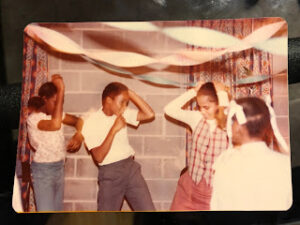 One Nation Under a Groove Ted Talk I look forward to your comments.
One Nation Under a Groove Ted Talk I look forward to your comments.
Culture
Well before rediscovering Lencioni, in the latter part of 2017, it was becoming clear to me that our team’s culture had shifted, and that addressing it was important. Actually, at that time, I didn’t know to call the issue that we were facing a culture challenge. I just knew that things didn’t feel right, and I wasn’t sure why.
Fortunately, I had a restless feeling about the environment I was experiencing, and I was able to call my friend Alan Young. A seasoned, skilled and successful entrepreneur, Alan stopped what he was doing with his family on an unseasonably warm winter Saturday afternoon. For 10 minutes or so I just spilled the cloudy collection of thoughts, ideas and observations that were bouncing around in my head – in no orderly fashion. After I talked and he listened (patiently), I may have still been confused… but Alan wasn’t.
In a contrasting 30 seconds Alan shared two pieces of counsel: 1) You’ve got to set clear expectations for your people, and 2) you’ve got to take the culture back.
Just that quickly, the clouds parted, and the sun shone through. The deranged and conflicting challenges that caused me concern began to organize themselves into opportunities I could take advantage of and problems that I could solve.
Off the bat there were things that I knew to do. First, I needed to show my teammates that I cared and was paying attention to the things that were bothering them.
We needed an HR function in the company, to begin with. So I hired Laura Purswell and her company, Compass HR Partners. This way we could develop policy for vacations and holidays, and we could standardize our recruiting and hiring practices. We also created an employee handbook to provide clarity around and define protections for the people who work at NMAAM. (Each of these are the kinds of vital details that my team knows I’d rather not focus on.)
I also hired a personal trainer for the staff (That didn’t last long – like most new year’s resolutions.) and instituted a monthly “family meal” (That one stuck.) to encourage colleagues to laugh and talk with one another in a more relaxed environment. Before getting to work on Lencioni’s leadership and teamwork principals, these steps began to redefine culture and set expectations for how we work together.
There were also many steps that I didn’t know how to take. “Culture’ is a big word. How does one create it, shape it or take it back? I was, at least, certain that an employee handbook and a monthly luncheon wasn’t enough.
So, I went to Amazon and bought another book – one on culture and what it takes to become a “best place to work” as defined by any one of several business periodicals. The most impactful of these books was one entitled “Culture is Everything.” Written by Tristan White, the author is the CEO of the PhysioCo in Perth Australia which has been selected as the Best Place to Work in Australia on a few occasions.
An easy read, “Culture is Everything” tells the story of how White’s company achieved that status. In short, it comes down to creating and living out a set of core values. And that idea emerges from the remarkably simple, but often forgotten, truism that employees can’t read the CEO’s mind.
Nothing like cold water to the face to wake you up!
Now fully alert, I had to give some thought to what our core values actually are. And, importantly, I needed to get a sense from my teammates as to what they thought our core values were. The good news is that the values already existed, we just had to look and find them, and then write them down.
Core values are not rules or policies that you have to follow. Rather, they are descriptive of the culture. What is it like to work here? How do we treat one another? What is expected of a new employee as they join? Once agreed to, they become an important reminder of culture, and a screen for employee fit and preference. If you are appropriately skilled and support the core values, there is a good chance that you will fit well in our company culture.
So that’s what we did.
Over the next several weeks I met with my teammates to talk about what we think makes our place of business special. Everyone had different thoughts, and the exercise generated some interesting conversations about what culture is, causing us all to think about what it really means to be a part of this team. It was nevertheless gratifying to observe that most thoughts, though articulated differently, were similar to my own and fell into common categories. After a few rapidly turned drafts we settled on six core values that guide our culture.
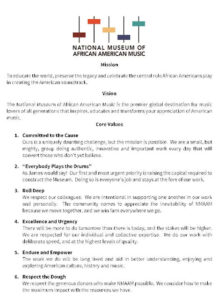
Over the last year, the words that make up the core values have begun to work their way into the lexicon of language around the office. We refer to them in job interviews and performance evaluations and use them to inspire one another and to say “thank you.”
The core values are a part of our business now, but there is so much more to do.
Becoming a “best place to work” takes a lot more than core values. Tristan White talks about the importance of strategic planning, efficient meetings, employee appreciation and other elements that are also important to shaping culture. We’ve only taken baby steps in these areas and have a lot more work to do. We are a work in process.
Dysfunction
I felt enlightened and empowered after reading The Ideal Team Player, and so I started conversations with our human resources consultant, Laura Purswell, and with Beth Morrow, our organizational behavior coach, on the subject. Both pointed me towards Lencioni’s preceding book, The Five Dysfunctions of a Team. 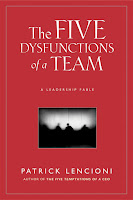
Of course, Amazon Prime is my friend, so a copy was on my desk the next morning. But the reading would have to wait until the weekend.
This one was only a slightly slower read. Mixed in with family time and social activities – and naps during football games – this book took me until sometime Sunday evening to finish. And once again, I was not disappointed.
While The Ideal Team Player gave me insight into individual behaviors, The Five Dysfunctions helped me to understand better how those behaviors were impacting teamwork and the work environment.
As backdrop, over the last year NMAAM’s staff had doubled. In so doing, the team had changed from a vertical one (where I had only one direct report) to a flatter one (where I had several). Although still a small group, with far less than 20 employees, the team dynamic had changed materially. The family feel that we’d enjoyed previously had become competitive, and the “all for one” spirit we’d enjoyed had pivoted towards more than occasional finger-pointing amongst colleagues. And in the midst of it all, there I am as the CEO alternatively oblivious and baffled.
What I had noticed consistently was that people weren’t having as much fun and didn’t seem to be as committed to the work or the mission of the museum. Work quality suffered and wasn’t as timely, and I was spending more time refereeing disagreements amongst grown people than I thought was appropriate.
Of course, all of this was coming about when we could least afford it. Every passing day brings the museum opening closer, which means that every decision and deliverable is more important today than it was yesterday.
This situation needed to be fixed. Things getting worse wasn’t an option, and things getting better would make everyone’s life easier, job enjoyment greater and project results better. This is why my man Patrick had become my new best friend.
In The Five Dysfunctions, Lencioni highlights that the challenges with a team working together boils down to:
· An absence of trust (invulnerability)
· Fear of conflict (artificial harmony)
· Lack of commitment (ambiguity)
· Avoidance of accountability (low standards) and
· Inattention to results (status and ego)
Once again, I saw my teammates and my work place in the parable that Lencioni used to highlight these detrimental characteristics. In my teammates I was routinely seeing blame shifting and missed deadlines, rather than acknowledgement that a mistake was made or that someone was unsure how to complete the task. I was experiencing a steady stream of frustrated folks in my office who had no issues with one another at all in management meetings. I was even seeing standards  lowered or goals changed in order to claim success rather than admit failure or a shortcoming.
lowered or goals changed in order to claim success rather than admit failure or a shortcoming.
When taken together this is a recipe for allowing the organization to miss its goals and to permit each individual to be confident that it was someone else’s fault. Of course, when NMAAM fails to raise the needed funds or to open on time and within budget there is only one place that the board of directors will look for explanation and accountability – and none of my direct reports will be in that meeting.
Conversely, I knew that a high performing team could make the work easier and much more fun. I knew that we could deliver a first-class product that would excite the nation. And I was even confident that we could exceed our fundraising targets.
But getting there from here would not be simple, nor straightforward. With that understanding and what I’d learned from The Ideal Team Player, I had enough information to get to work. As I thought about next steps, to my surprise, it seemed that the first thing that I needed to do was to schedule a series of meetings.
A golf outing, a management retreat, increased frequency of one on one meetings with my direct reports, and a regular schedule of meetings with the team as a whole all needed to be calendared. Common wisdom is that having too many meetings is the opposite of getting work done. Of course, that can be the case, but meetings, or spending time together, is also the only way to build a high-performing team. There simply is no substitute. In our case, my objective was to build trust, dispense with artificial harmony by encouraging constructive conflict, and to begin to focus the group on results.
Additionally, I took a chapter out of the world of consumer-packaged goods and developed a comprehensive schedule of objectives and goals for the company and each of its departments (“OGSM’s” – objectives, goals, strategies, and measures). The OGSM’s would address accountability and ambiguity, and all of this would be worked on in the wave of meetings that I’d scheduled.
There is much more that ca be said about the Five Dysfunctions of a Team and what it takes to overcome them but suffice it to say that the work is just beginning. Further, my role as leader is as important as any of my colleagues. Not only must I be consistent, but I have some habits of my own that need to be broken if I am to be effective in making the team more productive.
Lencioni points out that the leader must be vulnerable first, allow healthy conflicts to unfold without stepping in, be willing to make a wrong decision, encourage the team to hold one another accountable and set a tone for focusing on results. In their own ways and words, my team has asked that I do some of the same things to be a better leader for them.
Let’s give it a shot.
Team Player
Twenty years ago, in Washington’s National Airport, I stopped to buy a book – The Five Temptations of a CEO, written by Patrick Lencioni – when commuting to Charlotte, NC where I lived with my family. It was a curious purchase. A young executive at the time, I had more ambition than skill and more energy than experience. Yet, I thought it was worth the $20 to get some insights into the challenges of being a CEO.
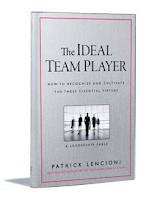 Twenty years later, when travelling from Los Angeles to Nashville, I needed something to read on the long trip home. While in Hudson’s airport store, picking up my usual peanut M&M’s and Diet Coke, I noticed another book by Mr. Lencioni – the Ideal Team Player.
Twenty years later, when travelling from Los Angeles to Nashville, I needed something to read on the long trip home. While in Hudson’s airport store, picking up my usual peanut M&M’s and Diet Coke, I noticed another book by Mr. Lencioni – the Ideal Team Player.
The title caught my interest because, now as an actual CEO with a little more experience and the battle scars to prove it, I was finding that as our team at the National Museum of African American Music grew, the concept of teamwork was becoming more important and more of a challenge. So, Lencioni and I were reunited two decades later in another airport. Once again, I was eager to learn – this time with context for the subject and a need to glean what I could for the benefit of our company.
 As I boarded the flight, my expectation was that I would read a few pages and then put the book down in favor of an in-flight nap to pass the time. Little did I know that The Ideal Team Player would render me fully alert. By the time the plane landed in Las Vegas for a short layover, I’d read about 75 of the books 200 pages.
As I boarded the flight, my expectation was that I would read a few pages and then put the book down in favor of an in-flight nap to pass the time. Little did I know that The Ideal Team Player would render me fully alert. By the time the plane landed in Las Vegas for a short layover, I’d read about 75 of the books 200 pages.
Lencioni was talking to me! He must’ve been sitting in my team meetings because clearly this book had been written about my colleagues and me. The picture was so clear that I knew what I needed to do: take notes and take action. In short, Lencioni brought home for me that the ideal player on our little team would be humble, hungry and smart; and definitely not be a jackass.
From the book I was reminded that the most important of these virtues is Humility. People who exhibit humility are quick to point out the contributions of others, to share credit, emphasize the team and to define success collectively.
Those who lack humility can be especially challenging to deal with when they are key performers on the team. Their contribution is important, but likely not more important than the contributions of the rest of the team.
People who are Hungry are always looking for more – more to do, more responsibility or more to learn. They don’t want to be perceived as slackers.
But this isn’t always good. Work can become too consuming, or the hunger can become disruptive to the rest of the team.
Smart does not refer to the intellect or skill to do a job; rather, it refers to perceptiveness about the people around them or with whom they work. Smart people, in this context, are very perceptive about group dynamics.The combination of all of these virtues makes for The Ideal Team Player. A deficit in one or more of these virtues can cause a member of the team to be considered… a Jackass, and teamwork becomes more difficult.
I was observing each of these virtues in my teammates and noticed some deficiencies too. So much so that I saw the Team Player model as one to adopt as I began to work on teamwork and productivity challenges within our business.Yet, this was just the beginning. There was more reading, thinking, training and planning to do.
They Killed That Man, and I Watched
They killed that man… and I watched.
No bullets or knives. That would’ve been too easy.
Instead, it was as though it happened in slow motion. A nick and a scratch. A body blow. Some bobbing and weaving, feinting and head fakes. Punches wide, wild and undisciplined. Attacks hidden behind masks and investigations.
The Champ’s defense? A little dancing… at first. Some rope-a-dope. A stumble or two. A rally. Test scores up. ACT scores up. Suspensions down. Resources reallocated to the least among them. Winning!
He thought he’d outlast ‘em. The cause was right. The mission was just.
But Their legs had more in ‘em than he thought. Just when They’d backed off and he’d caught his breath, They came back out for the next round – and kept swinging. A roundhouse. A jump-kick or three. Oh, you didn’t know? This is new school – MMA.
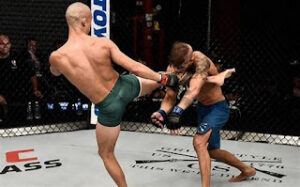
Then the crowd turned against the Champ. From the front row to the cheap seats, the boos were deafening.
Worse than that, the corner team was perplexed. The cuts were deep, and the blood was beginning to flow. But they were talking amongst themselves. The Champ said he was OK, after all. Ice, bandages and Vaseline were slow to come.
Some said, “throw in the towel.” Others, “keep fighting!”
In the end, They seemed to draw strength from the crowd. What looked to be a haphazard fight plan, turned out to be Their strategy after all. The bobbing and wild punches were all part of the plan.
The Champ didn’t even see the last flurry coming.
He went down. Hurt. Bloody, but… what?! Unbowed.
No, They didn’t “hang him high and stretch him wide.” Don’t want to create a deity.
Still, They killed that man…
 How can this be. He’s the Champ!
How can this be. He’s the Champ!
…and I was in his corner. What have I done? What should I have done?
Scary. Dizzying. Frustrating. Sad. Frightening.
Who will They go after next? Can They be stopped? “There, but for the grace of God, go I?”
Thankfully, the ref stopped it all before it got worse – “Blew the whistle.”
This way, he can rise again. He can live to fight another day.
“I ain’t mad a’ cha.”



